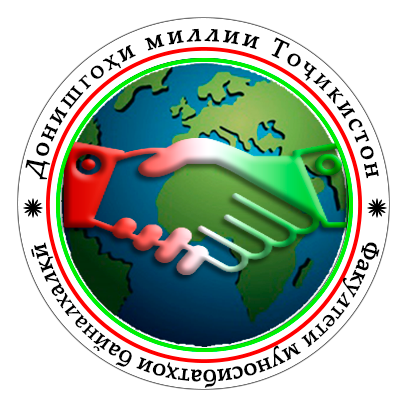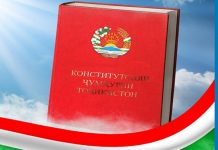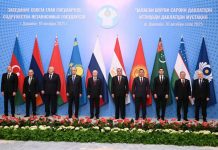The first “Central Asia–European Union” summit was held in Samarkand on April 3–4. Participants include European Council President António Costa, European Commission President Ursula von der Leyen, and the heads of state of Uzbekistan (Shavkat Mirziyoyev), Kazakhstan (Kassym-Jomart Tokayev), Kyrgyzstan (Sadyr Japarov), Tajikistan (Emomali Rahmon), and Turkmenistan (Serdar Berdimuhamedov). Held under the theme “Investing in the Future,” the summit also includes leaders from the European Bank for Reconstruction and Development and the European Investment Bank. Discussions are focused on expanding multifaceted relations and practical cooperation between the region and the EU.
During the first summit between the EU and the Central Asian countries of Kazakhstan, Kyrgyzstan, Tajikistan, Turkmenistan and Uzbekistan, a strategic partnership between the regions was announced. The summit discussed a wide range of proposals for cooperation, from joint development funds and investment forums to regional water management strategies, all with the European Union’s participation.
The agreement includes cooperation in developing transport infrastructure, raw material extraction, clean energy and digital connectivity. In light of these figures, both sides discussed strengthening economic ties and building a global partnership based on trust, strategic interests, and long-term goals. The region’s natural resources include lithium and manganese, which are both in demand from the tech industry. The Central Asia five have pledged to cooperate with the European Union on their extraction.
As part of these plans, the Trans-Caspian Transport Corridor — which will bypass Russia — will be established with the aim of cutting the overland journey between Europe and Central Asia in half. By this meaning European Commission President Ursula von der Leyen said: “Your strategic location can open global trade routes and investment flows. And these new investments will enhance sovereignty. They will strengthen your economies. And most importantly, they will make new friendships”. Von der Leyen said that she believes the partnership will lead to new opportunities in sectors such as energy, tourism, trade and transport as she announced a €12 billion investment package for the region. Central Asia holds large deposits, including 38.6% of the world’s manganese ore, 30.07% of chromium, 20% of lead, 12.6% of zinc, and 8.7% of titanium. “These raw materials are the lifeblood of the future global economy. Yet they are also a honeypot for global players. Some are only interested in exploiting and extracting,” von der Leyen told Central Asian leaders.
It would be noted, that the new package will finance projects in transport (€3 billion), critical raw materials (€2.5 billion), water, energy and climate (€6.4 billion), as well as digital connectivity – some of which have already been greenlit and allocated by the European Bank for Reconstruction and Development (EBRD). Access to clean energy and rare earths is critical for the EU as it seeks to achieve climate neutrality by 2050 and boost its autonomy in strategic sectors. But sizeable shares of the global mining, processing and recycling of some of the critical raw materials, like lithium, that are indispensable to the development of renewable energy, everyday items as well as defence systems, are controlled by China, from which the EU wants to ‘decouple’ due to its aggressive and protectionist trade and foreign policy practices.
In general, within the framework of the new partnership of Central Asia–European Union” summit four priority areas of cooperation were identified:
First, the development of transport corridors. The European Union has approved the development of the Trans-Caspian Transport Corridor, which will reduce the land route between Europe and Central Asia to about 15 days.
Second, important minerals. Central Asia contains 40 percent of the world’s manganese reserves, as well as large reserves of lithium and graphite.
Third, green energy. The speech is talking about the development of wind, solar, and hydropower in the region. The European Union is involved in the construction of the Rogun hydroelectric power station in Tajikistan and the Kambarata hydroelectric power station in Kyrgyzstan, which should turn the region into a clean energy hub.
Fourth – digital communications and satellite internet. The European Union announced the launch of a satellite program to connect remote areas.
Thus, during the summit, the participants emphasized the strengthening of bilateral and multilateral relations, the exchange of experience, and the strengthening of economic and cultural cooperation. Issues related to security, the fight against terrorism, and other modern threats were also discussed.
On April 4, in the city of Samarkand, the President of the Republic of Tajikistan, Leader of the Nation, Honorable Emomali Rahmon, participated and delivered a speech at the Central Asia-European Union Summit.
Within the framework of the Central Asian-European Union summit, the Republic of Tajikistan occupied a special place. Its geographical and transit position, rich natural and hydropower resources, experience of peace and peaceful coexistence, as well as Tajikistan’s global initiatives on water, climate and stability and security have raised the status and prestige of our country at the international level, especially within the European Union.
The President of our country, Emomali Rahmon, called the continuous development of relations with the European Union at the bilateral and multilateral levels one of the priority directions of Tajikistan’s foreign policy. It was emphasized that the Roadmap for Deepening Relations between Central Asia and the European Union has become a key document that regulates interregional cooperation.
Regarding the state of trade and economic cooperation between the countries of Central Asia and the European Union, the Head of State, Emomali Rahmon, stated that “we aim to further expand the export of products from Tajik manufacturers to European markets, including through the use of mutual trade preferences.”
The Head of State, Honorable Emomali Rahmon, reflected on the opportunities and natural resources of our country, the potential of the industrial, energy and agricultural sectors, and stated that Tajikistan is interested in attracting foreign investment, importing new European technologies and using the experience of reputable companies. It was emphasized that the issue of energy development is becoming increasingly important, given the increasing demand for electricity, and therefore, one of the promising areas in our region is cooperation in the field of “green” energy.
During the Samarkand Summit Honorable Emomali Rahmon stated that for Tajikistan, the energy sector, namely renewable energy sources, which also include hydropower, is important not only for meeting national socio-economic needs, but also for the further development of regional cooperation. Recalling the contribution of the European Union to the creation and modernization of “green” energy generation capacity in our country, the Head of State, Emomali Rahmon, emphasized its successful participation in the implementation of the projects of the “Norak”, “Sebzor” and “Kairakkum” hydroelectric power plants.
Meanwhile, President of the Republic of Tajikistan Emomali Rahmon has met with all three EU institution leaders. In his meeting with European Council President António Costa, Emomali Rahmon called the EU one of Tajikistan’s most important international partners, highlighting joint efforts in hydroelectric infrastructure reconstruction and development. He expressed a strong interest in attracting European investment and technology for the construction of the Rogun Dam and modernization of the Nurek Dam. Costa praised Tajikistan’s progress in resolving border disputes with Kyrgyzstan and Uzbekistan, calling it a historic achievement.
In talks with von der Leyen, Emomali Rahmon confirmed Tajikistan’s commitment to the regional “road map” for cooperation and expressed interest in contributing to an EU–Central Asia satellite link, as well as developing joint AI initiatives. He also assured that Tajikistan would host European guests with due diligence at the upcoming International Conference on Glacier Preservation in Dushanbe this May.
During his meeting with Renaud-Basso, Emomali Rahmon noted that the EBRD has implemented 184 projects in Tajikistan worth over $1 billion, targeting the financial sector, private enterprise, and transport and energy systems. They agreed to continue working together, with a focus on the green agenda.
It should be noted that Tajikistan is considered an initiator of solving global problems, strengthening interregional relations, and contributing to the process of regional integration of Central Asia and interregional – Central Asia with the European Union. The Samarkand Summit is an important step in strengthening relations between Central Asia and the European Union, and will have a positive impact on the sustainable development and security of the region.
In total, during the Samarkand Summit President of the Republic of Tajikistan Emomali Rahmon stated and attracted participants of Summit to following points and issues:
– called the EU one of Tajikistan’s most important international partners, highlighting joint efforts in hydroelectric infrastructure reconstruction and development;
– the contribution of the European Union to the construction and modernization of “green” energy generation capacity in Tajikistan and by 2037 Tajikistan will become a “green” country;
– inviting for the contribution of the European Union on a bilateral basis or within the framework of the “Global Gateways” initiative to the construction and modernization of hydropower facilities, which are examples of “green” economy and energy;
– the contribution of the European Union in the construction of electricity transmission infrastructure to South Asia through the CASA-1000 transmission line was highly appreciated.
– the participation of the European Union in financing projects in the energy, agriculture, industry, transport and communication infrastructure sectors was considered important;
– the development of “green” energy as an important sector and also important for the further development of regional cooperation. According to the plan, by 2032 Tajikistan will fully switch to the production of electricity from renewable energy sources;
– Tajikistan’s role in solving water-related problems, including the adoption of 14 relevant resolutions of the United Nations General Assembly at the initiative of Tajikistan to achieve coordinated global goals in the field of water;
– protection of glaciers. The glaciers of Tajikistan are the main source of water resources in the region, and 60 percent of Central Asia’s water is formed within the territory of our country;
– important factors for the sustainable development of interregional relations, including transport and communications;
– expanding cooperation for the development of the private sector and investment in job creation, training of highly qualified workers, and expanding cultural and humanitarian ties as an important component of relations between the countries of the two regions;
– expanding cooperation in the field of education, including opening branches of European universities in our country and increasing quotas for studying in European educational institutions;
– tourism can serve as an important link for establishing direct ties between our peoples;
– expressed concern about the importance of climate change issues, including the complete melting of about 1,300 of Tajikistan’s 14,000 glaciers over the past fifty years;
– further developing cooperation with the European Union within the framework of regional programs, such as BOMCA and CADAP.
Payvandov Kh.B.- senior teacher of international relations department, faculty of international relations TNU




